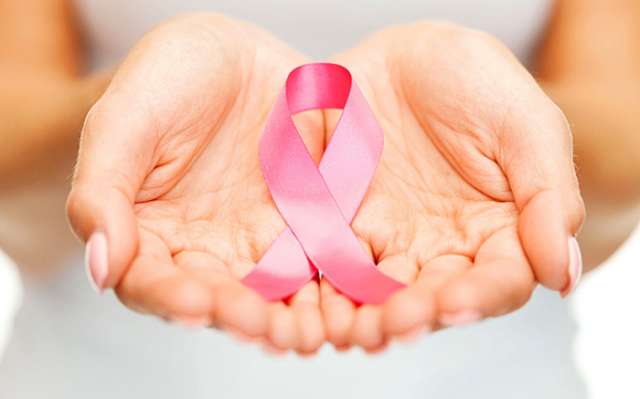If specialists do start considering a drug`s cost in their prescribing habits, such decisions could dent the multibillion-dollar cancer drug business of companies from Roche Holding AG to Celgene Corp. Worldwide spending on cancer medicines reached $100 billion in 2014, a year-over-year jump of more than 10 percent.
Doctors are unimpressed with so-called "me too" drugs developed by companies looking to grab market share from a more established product. They are also less likely to use a drug outside of its approved indication for patients who have exhausted other types of treatment.
"There are drugs that don`t make much sense given how much they cost, given their small benefits," said Dr. Peter Bach, director of Memorial Sloan Kettering`s Center for Health Policy and Outcomes in New York. "There are drugs that can cost up to $10,000 a month that provide, at the median, a few weeks or less than a month of additional life, but with substantial toxicity."
More than one-quarter of spending by Medicare, the federal health insurance plan for seniors, is for services provided to beneficiaries in their last year of life, according to the Kaiser Family Foundation.
Doctors say that, even with harsh side effects, a few more weeks of life may be well worth the price to some patients. For others, the potential benefits may not outweigh the costs.
Lilly`s Cyramza was approved by U.S. regulators in April to treat advanced colorectal cancer in combination with chemotherapy. It works similarly to Roche Holding AG`s much older drug Avastin and to Sanofi SA`s Zaltrap.
"Lilly got it on the market in stomach cancer (in 2014), which was a very nice strategy since it was one of the few indications where Avastin missed," said Dr. Leonard Saltz, chief of gastrointestinal oncology at Memorial Sloan Kettering. But when Lilly put it on the market for colon cancer, where it does compete with Avastin, they kept its price at double the rate of the Roche drug.
"In colon cancer, I don`t know anyone who is using it," Saltz said of Cyramza. Even Avastin, which extends colon cancer survival by about 1.4 months compared to chemotherapy alone, is "massively overused and massively overpriced," he said.
Dr. Lowell Schnipper, chief of hematology-oncology at Beth Israel Deaconess Medical Center in Boston, also described Cyramza as providing limited benefit at a cost of $7,000 to $9,000 a month.
Lilly said in an emailed statement that Cyramza addresses a high unmet medical need, while Bayer said that Stivarga is an important, and competitively priced, treatment option. Genentech, the U.S. biotechnology unit of Roche, said it limits the annual cost of Avastin to about $69,400 for its approved uses.
U.S. patients are paying a larger portion of their own health costs, in the form of higher deductibles, co-payments and premiums. Some insurance plans require patients pay up to 30 percent of the cost of cancer drugs, although most also put a cap on those expenses. Under President Barack Obama`s Affordable Care Act, insurance policies have total out-of-pocket limits of $6,600 for individual consumers and $13,200 for families.
Major medical groups including the National Comprehensive Cancer Network and the American Society of Clinical Oncology are developing ways to consider a drug`s affordability in their treatment decisions. But as they wait for firmer guidelines, some cancer doctors are making what they view as some obvious changes.
"In the past, the cost implications of care were not on our radar until the patient brought it up ... now we are much more sensitized to the issue," said Dr. Neal Meropol, chief of hematology and oncology at University Hospitals Seidman Cancer Center in Cleveland.
Showing how inefficient the current pricing system is, even when a drug is less effective than a competitor, it doesn`t necessarily cost less. Of 51 cancer drugs approved between 2009 and 2013, 21 treatments classified as "novel" had a median annual price of $116,100, while the 30 deemed "next-in-class" had a median price of $119,765, according to a recent study in the Journal of the American Medical Association Oncology.
At the same time, the cost of treatment is rising steadily. In 1995 oncology patients and their insurers paid $54,100 for an additional year of life, but by 2013 the price had jumped to $207,000, according to a study sponsored by the National Bureau of Economic Research.
Saltz at Memorial Sloan Kettering said Cyramza for colon cancer is a clear example of "a drug that costs much more and does absolutely nothing," but said doctors may find it harder to decide on a drug that "costs a lot and does very, very little."
"It costs around $12,000 to $13,000 a month and makes people feel tired, causes skin rash on hands and feet," he said. Insurers cover it, but require patients pay a substantial amount up front. "I used it a fair amount when it first came out, but noticed that people didn`t feel too good. I now discuss it with patients and most decide not to use it."
Anthem Inc, the second largest U.S. health insurer, has a program to steer oncologists toward effective treatments deemed to offer the best value, paying them a monthly fee for adhering to a recommended treatment regimen. Anthem cited drugs like Avastin and Celgene`s Abraxane as overused relative to their value.
"Abraxane is a newer version of an older (generic) drug called paclitaxel - they basically do the same thing," said Dr. Jennifer Malin, medical director for oncology at Anthem and an attending physician at the Veterans Affairs Greater Los Angeles Health Care System.
One advantage of Abraxane is that it is less likely to cause numbness. But Malin notes that a doctor can use paclitaxel first and only switch to the more expensive drug if the patient experiences that side effect.
Paclitaxel costs around $200 per dose compared with $10,000 for Abraxane, she said. Celgene, which makes Abraxane, said it believes the drug is a valuable treatment option.
More about:
















































